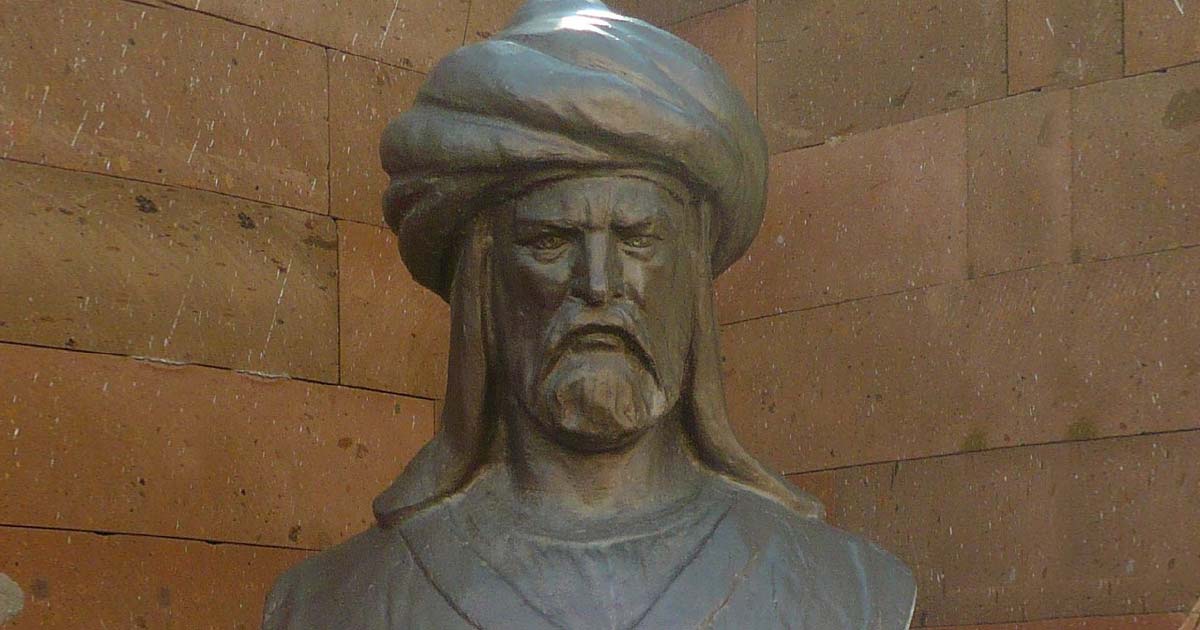Batu Khan: The Leader of the Golden Horde Kept His Grandfather Genghis’ Legacy Going
Batu Khan was a Mongol ruler and the founder of the Golden Horde (known also as the Kipchak Khanate, and the Ulus of Jochi). He was a grandson of Genghis Khan through Jochi, the Great Khan’s eldest son, and was responsible for the expansion of the Mongol Empire into Russia and Eastern Europe. The khanate established by Batu Khan lasted for about 200 years.
The Khan’s Family
Batu was born around 1205 as the second son of Jochi. His father, though being Genghis Khan’s first-born, had fallen out of favor with the Great Khan. A civil war between father and son almost erupted because Jochi was suspected of conspiring against Genghis. War, however, was averted as a result of Jochi’s death in February 1227. Genghis Khan himself died six months later and Jochi’s share of the empire was divided amongst his sons. Apart from the westernmost part of the empire, Jochi’s sons were also given 4,000 Mongol soldiers to continue the expansion of the empire.

Genghis Khan seated in the center and Jochi standing in the left. (Public Domain)
Batu Khan and the Golden Horde
Whilst Jochi’s eldest son, Orda Khan, received the eastern portion of his father’s lands, the western area came under the rule of Batu Khan. This may be regarded to be the origins of the Golden Horde. The size of Batu Khan’s army was augmented through the recruitment of warriors from the Turkic peoples (mainly Kipchak Turks) he had subjugated, resulting in the Turkic identity of the Golden Horde and its successor states.
- Kublai Khan: Mongol Warrior, Horseman, Hunter and Powerful Emperor
- The Famous and Powerful Khanates that Followed the Mongol Empire
- Khutulun: The Undefeated Bad-Ass Mongolian Warrior Princess
Batu Khan was given the order to expand the Mongol Empire westwards by Ogedei Khan, his uncle and the successor of Genghis Khan, in 1235. For this campaign, Batu Khan was given an army of about 130,000 men. The actual command of the army, however, was given to Subutai, one of the most talented generals of the Mongol Empire. Some of Batu Khan’s relatives, such as his cousins Guyuk and Mongke, were also sent to participate in the campaign.
Batu Khan Invasions
In 1236, Batu Khan and the Mongol army crossed the Volga and invaded Volga Bulgaria. Within a year, the Volga Bulgarians, Kypchaks (Kipchaks), and Alani were defeated. Batu Khan then turned his attention to the Russian principalities. Ryazan fell in 1237, followed by Vladimir-Suzdal.

Golden Horde raid at Ryazan. (Public Domain) Batu and his army took Ryazan in 1237.
The Mongol army was then split into smaller units, so as to attack the various principalities simultaneously. The only principalities not destroyed by the Mongols were Smolensk (which had submitted to them), Novgorod, and Pskov (both of which were beyond the reach of the Mongols at that time). In the summer of 1238, the Crimea and the southern Ukrainian steppes had fallen to the Mongols. In December of the same year, Kyiv was sacked. The Russian princes were now vassals of the Golden horde.
With the conclusion of the Russian campaign, Batu Khan now set his sights on Central Europe. For this campaign, the Mongol army was split into three groups. The first invaded Poland and won a decisive battle against Henry II the Pious, the Duke of Silesia, and his allies at the Battle of Legnica in 1241. The second group crossed the Carpathians, whilst the third group journeyed along the Danube. The three armies regrouped in Hungary, where Batu Khan and Subutai crushed a Hungarian army under King Bela IV at the Battle of Mohi (which took place two days after the Battle of Legnica).
- Ogedei Khan: Only His Death Could Save Europe from the Mongols
- Joining the Vast, Insatiable Armies of Khan: The Mongol Military – Part I
- Genghis Khan: What Transformed Temujin Borjigin into an Unstoppable Force Bent on World Domination?

Battle of Mohi 1241 between Hungarians and Mongols. (Public Domain)
As Batu Khan and his generals were preparing to conquer the rest of Europe, news arrived from Mongolia that Ogedei Khan had died at the end of 1241. A kurultai was to be held in order to select a new Great Khan, so the Mongol princes were called back to Karakorum. As a consequence, Batu Khan and the Mongol army withdrew from Europe during the spring of 1242.
Guyuk was elected as the new Great Khan. Due to the bad blood between him and Batu Khan, however, it was impossible for the latter to continue the campaign against Europe. When Guyuk was succeeded by his cousin, Mongke, in 1251, Batu Khan began to plan new campaigns against Europe, but Batu Khan died in 1255 before the campaigns could commence.

Batu Khan. Medieval Chinese drawing. (Public Domain)
Top image: A statue of Batu Khan in Turkey. Source: Vikiçizer/CC BY SA 3.0
By Wu Mingren
References
Encyclopedia.com, 2018. Batu Khan. Available at: https://www.encyclopedia.com/people/history/central-asian-history-biographies/batu-khan
Enkhzul, 2016. “Barbaric” Batu Khan built Russia up. Available at: https://www.discovermongolia.mn/blog-news-barbaric-batu-khan-built-russia-up/
New World Encyclopedia, 2014. Batu Khan. Available at: http://www.newworldencyclopedia.org/entry/Batu_Khan
New World Encyclopedia, 2017. Golden Horde. Available at: http://www.newworldencyclopedia.org/entry/Golden_Horde
Szczepanski, K., 2017. What Was the Golden Horde?. Available at: https://www.thoughtco.com/what-was-the-golden-horde-195330
The Editors of Encyclopaedia Britannica, 2016. Batu. Available at: https://www.britannica.com/biography/Batu-Mongol-ruler

















